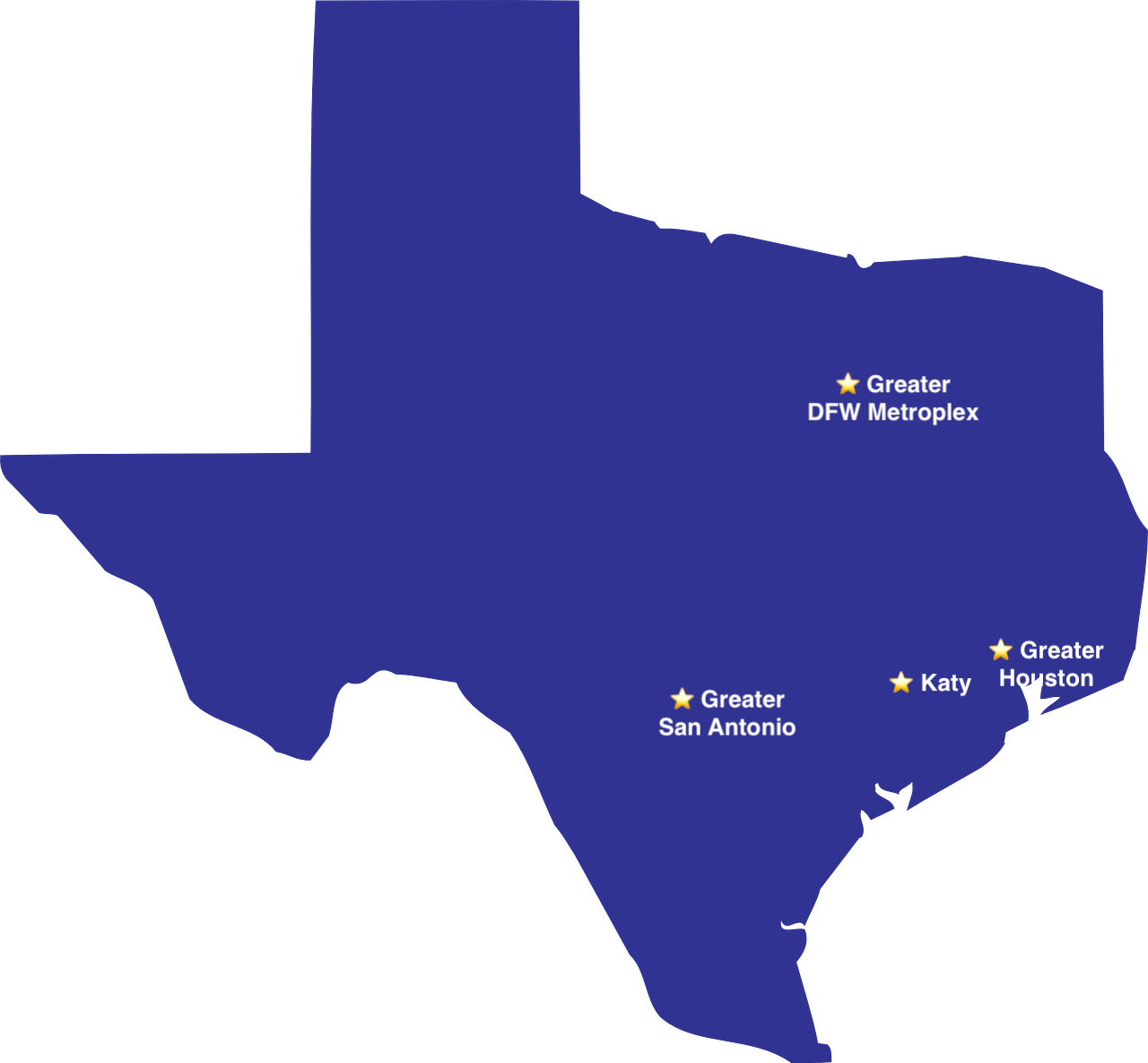Special Education Behavior & Discipline
Can students with disabilities be disciplined?
Yes. However, any school response to special education behavior must comply with the requirements of the Individuals with Disabilities Education Act (IDEA). Under IDEA, a child with a disability is entitled to a free, appropriate public education (FAPE) in the least restrictive environment. Arbitrarily removing them from their educational program could be a denial of FAPE and IDEA. That is why there are specific procedural safeguards for students with disabilities.
Generally, the Texas Education Code grants schools the ability to discipline students for various actions; however schools must always comply with the IDEA.
What procedure does the school have to follow?
First, the teacher has the discretion to remove a student from the classroom. If the teacher decides to remove a student for the purpose of maintain classroom order and discipline, they will send the student to the principal’s office. At that point, the principal will administer the appropriate discipline, consistent with the violations and disciplinary procedure set forth in the Student Code of Conduct.
When can a teacher remove a student from a class?
Texas law states that a teacher can remove a student who has done either of the following:
- Been documented by the teacher to repeatedly interfere with either the teacher’s ability to communicate with the class or the ability for the other students to learn; or
- Whose behavior is so disruptive, unruly, and/or abusive that it seriously interferes with either the teacher’s ability to communicate with the class or the ability for the other students to learn.
A teacher is allowed to document any student conduct that does not conform with the Code of Conduct and submit that documentation to the principal. If a teacher removes a student from their classroom, the student is not allowed to return to that teacher’s class without the teacher’s consent, unless a committee determines that such placement is the best option for the student.
What happens after a teacher removes a student from the classroom?
Once a student has been removed from a classroom, the principal will administer the appropriate disciplinary actions consistent with the Code of Conduct. The student may be placed in another appropriate classroom, placed into in-school suspension for up to three days, or placed into a disciplinary alternative education program (DAEP). As mentioned above, the principal cannot return the student to the original teacher’s classroom without that teacher’s consent or a committee decision.
What’s a removal conference?
Texas law states that within three days of a teacher removing a student, the school principal will convene a conference including the principal or other appropriate administrator, the student’s parent/guardian, the teacher, and the student. The student is entitled to either written or oral notice of the reasons they were removed from the class, an explanation for the basis of the removal, as well as an opportunity to respond. However, the student is not allowed to return to the classroom pending the conference. The teacher is allowed to place conditions on the student’s return to the classroom, such as a behavior agreement with clear expectations and consequences. The teacher can also still refuse to consent to the student’s return to the classroom. In no way should the teacher be coerced into consenting to the return of the student in their classroom.
What happens if the teacher refuses to consent to the student’s return to the classroom?
If a teacher refuses to consent to the student’s return to the classroom, a Placement Review Committee is convened. The committee consists of three appointed members: two teachers to serve as members (and one to serve as an alternate member) and one member from the school district’s professional staff. The teacher who is refusing to consent to the student’s return is not allowed to serve on the committee. The committee can determine whether the teacher’s class is the best or only appropriate placement and return the student to the classroom, or they can place the student in another appropriate classroom with a different teacher. If the student is returned to the original classroom and continues their disruptive behavior, the teacher is allowed to remove the student again.
What would cause a student to be placed into a DAEP?
A student must be removed from class and placed into a DAEP for engaging in the following conduct:
- A false alarm or report of a present, past, or future bombing, fire, offense, or other emergency, or terroristic threat;
- Commits any of the following crime within 300 feet of school property, or on a school sponsored or related activity or trip off of school property:
- A felony
- Assault
- Sells, distributes, or delivers to another person, or possesses, uses, or is under the influence of drugs and alcohol
- Public lewdness or indecent exposure
- Harassment against a school district employee
- Engages in conduct, on or off school property, that would be considered retaliation against any school employee
- Conduct occurring off campus and while not in attendance at a school sponsored or related activity for engaging in either a felony offense in Title 5 of the Penal Code or an aggravated robbery. Evidence of such conduct and justification for removal will be based on one of the following:
- A deferred prosecution
- Found delinquent by a jury
- By the superintendent of the school district having a reasonable belief that the student engaged in such conduct
An elementary school student may also be placed in a DAEP, however they cannot be placed in a DAEP setting that consists of students older than elementary school age.
What happens once a principal decides to place a student in a DAEP?
The superintendent, or their designee, will review the student’s placement. During this review period, the student is not allowed to return to their original classroom. Within three days from the original placement decision, the superintendent will meet with the student’s parent/guardian. After this meeting and reviewing all relevant information, the superintendent is allowed to continue the placement in the DAEP if there is reason to believe the student in their regular classroom would threaten the safety of either the other students or teachers.
What if I disagree with the DAEP placement?
The student’s parent/guardian is able to appeal the superintendent’s decision to the Board of Trustees. The Board, at their next scheduled meeting, will review the notice of removal, receive information from the student, their parent/guardian, and the superintendent. The Board will then either confirm or reverse the superintendent’s decision. If the Board confirms the decisions, they will inform the parent/guardian of the right to appeal to the Commissioner. During this appeal time, the student is still not allowed to return to their original classroom.
Is corporal punishment still legal?
Technically, yes. Each individual school district is allowed to adopt a policy under the Education Code which would permit the use of corporal punishment as a method of student discipline. The Education Code defines corporal punishment as, “the deliberate infliction of physical pain by hitting, paddling, spanking, slapping, or any other physical force used as a means of discipline.” Corporal punishment does not include physical pain caused by reasonable physical activities such as extra-curriculars or physical education; nor the restraint authorized under the Code. Parents/guardians not wishing for their child to be disciplined via corporal punishment need to submit a written, signed statement to that effect at the beginning of each school year.
My child has a disability and keeps getting disciplined for their behavior, what do I do?
It depends on the type of discipline your child is receiving. Under Texas law and IDEA, students with disabilities are expected to act in accordance with their school’s code of conduct. Violating the code is subject to disciplinary actions. If a child with a disability violates the code of conduct, the school is allowed to remove the child from their current placement to either another setting, an interim alternative educational setting, or place them in suspension for no more than 10 consecutive school days – provided that these disciplinary options are also applied to students without disabilities – and for additional removals of not more than 10 consecutive school days in the same school year for different incidents of misconduct. Any removal of more than 10 days can sometimes be considered a change in educational placement – but that determination is on a case-by-case basis. However, if your child is disciplined in a way that they are removed for additional days after the 10 day mark, they are entitled to receive educational services. Once your child meets the 10 day mark, the school must conduct a Manifestation Determination.
What’s a Manifestation Determination?
A Manifestation Determination is an IEP meeting consisting of the school administration, student’s parent/guardian, and relevant members of the student’s IEP team to review all the relevant information to determine if:
- The student’s conduct was caused by, or had a direct and substantial relationship to, their disability; or
- The student’s conduct was a direct result of the school’s failure to implement the student’s IEP.
If the IEP determines that the student’s conduct was either caused by/related to their disability or caused by the school’s failure to implement their IEP, the school must take immediate action to remedy those deficiencies. If the IEP determines that the student’s conduct was NOT caused by/related to their disability or the school’s failure to implement the IEP, then the disciplinary action leading up to this point is valid and the parents have the same rights and procedures to appeal as parents of students without disabilities – as described above and in accordance with the school district’s grievance process.
The Manifestation Determination meeting determined it was a manifestation – now what?
If it was determined that your child’s actions and conduct were a manifestation of their disability, the IEP team must either:
- Conduct a functional behavioral assessment (FBA) – unless one had previously been conducted – and implement a behavioral intervention plan (BIP) for your child; or
- If your child already has a BIP in place, the IEP will review the BIP and modify it as needed to address your child’s behavior; and
- Return the child to their original placement they were removed from, unless the IEP team agree to a change of placement as part of the modification of the BIP.
What exactly is a BIP?
“BIP” stands for a Behavior Intervention Plan. A BIP is a written plan, created by school administration and faculty along with the student’s parent/guardian, to prevent or stop poor behaviors and reward good behavior. A BIP has three parts: a description of the problem behavior, an explanation why the behavior is happening, and finally strategies and accommodations to modify and correct the behavior. If your child already has a Section 504 Plan or an IEP, they may already have a BIP in place as part of those plans. However, a student does not need to have a Section 504 Plan or IEP in order to have a BIP.
How does a school team figure out why my child is engaging in poor behaviors?
The school team will conduct an FBA, functional behavior assessment. This means that the school team will most likely interview your child, yourself, and your child’s teachers and staff that interact with your child. The school team will also usually observe your child while at school. The school team will also review previous report cards and incident reports, if any exist. Once this assessment is complete, they will convene a meeting to create the BIP.
What’s a PBIS?
PBIS stands for Positive Behavioral Interventions and Supports. It is a schoolwide approach to teach positive behaviors, improve school safety, and various responses to student misbehaviors besides the more traditional forms of punishment. Through PBIS, teachers and school staff teach students about positive and appropriate behaviors and set clear expectations for student behaviors.
How exactly does PBIS work?
PBIS is set up in three separate tiers.
- Tier 1 is school wide and applies to everyone in the school. In this tier, students learn basic behavior expectations. School faculty and administrators will recognize and reward students for good behavior.
- Tier 2 is an additional layer of support for students who continue to struggle with behavior issues. These students receive evidence-based interventions and instructions. An example of this would be the creation of a small group based on a specific behavioral goal where groups of students receive additional instruction on appropriate behaviors for that specific behavior goal and works on improving their ability to comply.
- Tier 3 is the most concentrated layer. It provides supports and services to individual students based on their unique struggles with behavioral issues.
How is PBIS different than a BIP?
A BIP is individualized for each student from the very beginning. It looks at the student’s academic and behavior history and creates an individualized Plan to modify and correct poor behaviors through supports and accommodations. PBIS is a school effort to increase positive behaviors. With PBIS, a student struggling with their behaviors has to regress from Tier 1, to Tier 2, and then finally to Tier 3 before receiving an individualized plan to work with them on improving their behavior.
The Manifestation Determination said it was a manifestation of my child’s disability, but they were still placed in an interim alternative educational setting. Why?
There are a few types of student conduct where the school can remove a student to an interim alternative educational setting, whether it was determined their conduct was a manifestation of their disability or not. Such conduct includes:
- Carrying or possessing a weapon at school, on school property, or at a school function;
- Knowingly using or possessing, selling, soliciting the sale of, or otherwise distributing a controlled substance while at school, on school property, or at a school function;
- Inflicting serious bodily injury on another person while at school, on school property, or at a school function.
What if I don’t agree with the placement decision or the manifestation determination?
If you disagree with the placement decision or the manifestation determination, you have the right to appeal the decision by requesting a hearing. The hearing is requested by filing a Due Process complaint pursuant to IDEA. While you can file a Due Process complaint on your own, it is always helpful to seek out an Education Law attorney to assist you with the Due Process hearing.
Can a student who is not eligible for special education or related services have a Manifestation Determination?
It depends. There are times when a student who has not been determined to either be eligible for special education or related services may be entitled to the same procedural safeguards as a student with a disability. If the school had knowledge that the student was a child with a disability before the conduct that resulted in the disciplinary action took place. A school has knowledge when either:
- The parent/guardian of the child expressed concern in writing to school administrators or the student’s teacher(s) that the student was in need of either special education or related services;
- The parent/guardian requested the school evaluate their child for an eligibility determination for special education or related services; or
- The teacher or other school faculty expressed specific concerns about a pattern of behavior the student was engaging in to the director of special education or other supervisory faculty.
However, the school is considered not to have knowledge when the parent/guardian of the child has either not allowed the child to be evaluated or has refused services; or if the child has been previously evaluated and determined not to be a child with a disability.
My child has a Section 504 Plan instead of an IEP – do they have the same rights as a student with an IEP?
In general, yes, students with a Section 504 Plan have the same procedural safeguards as students with an IEP when it comes to student discipline.







